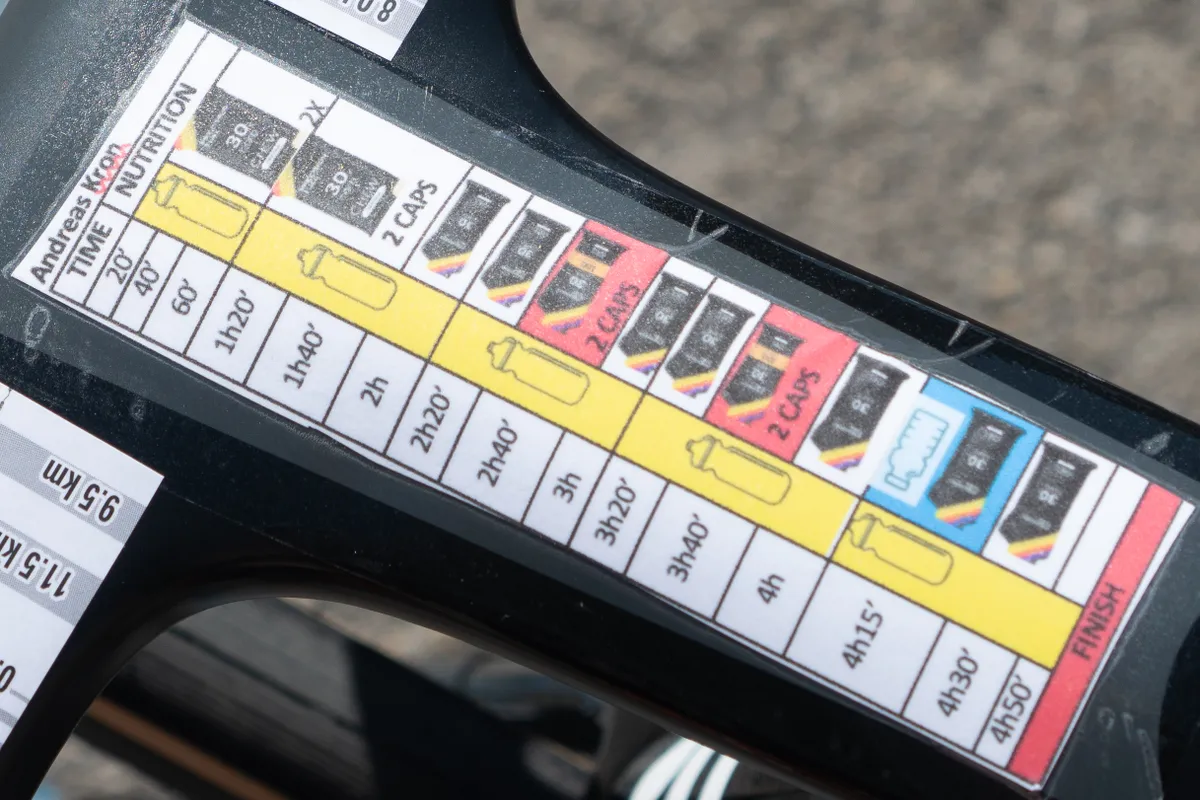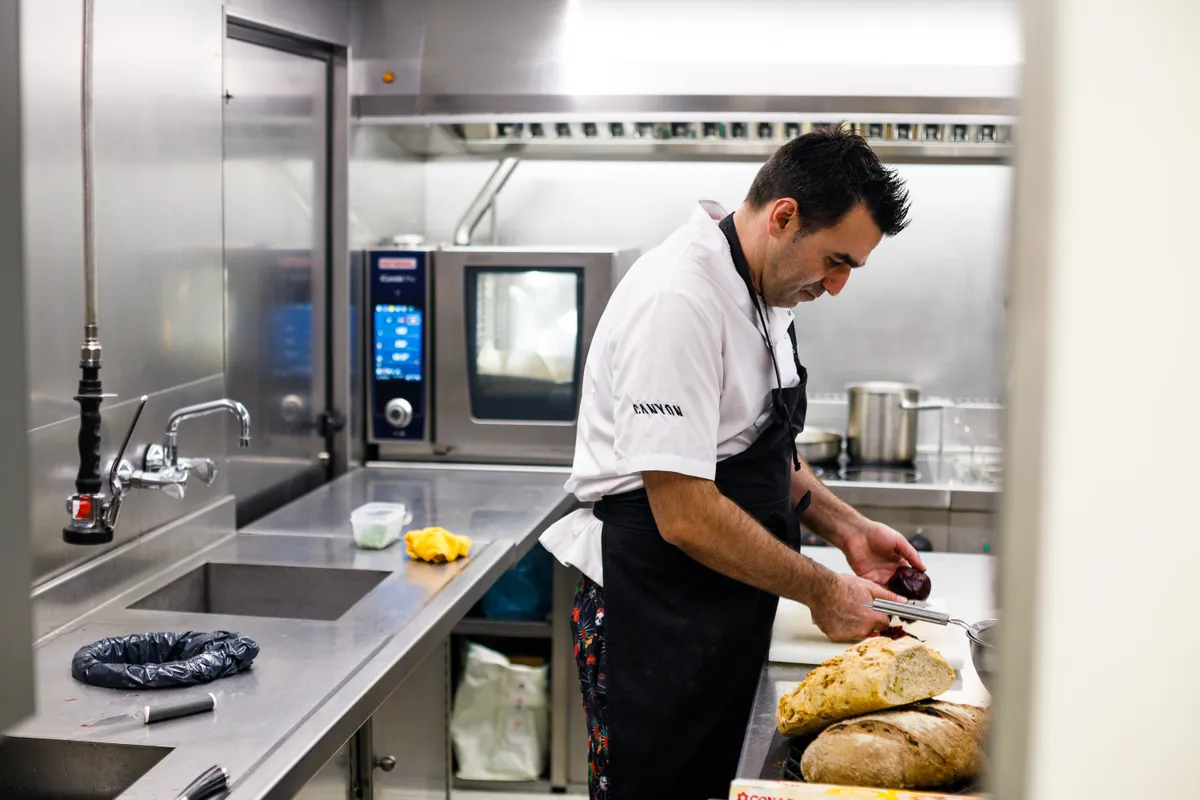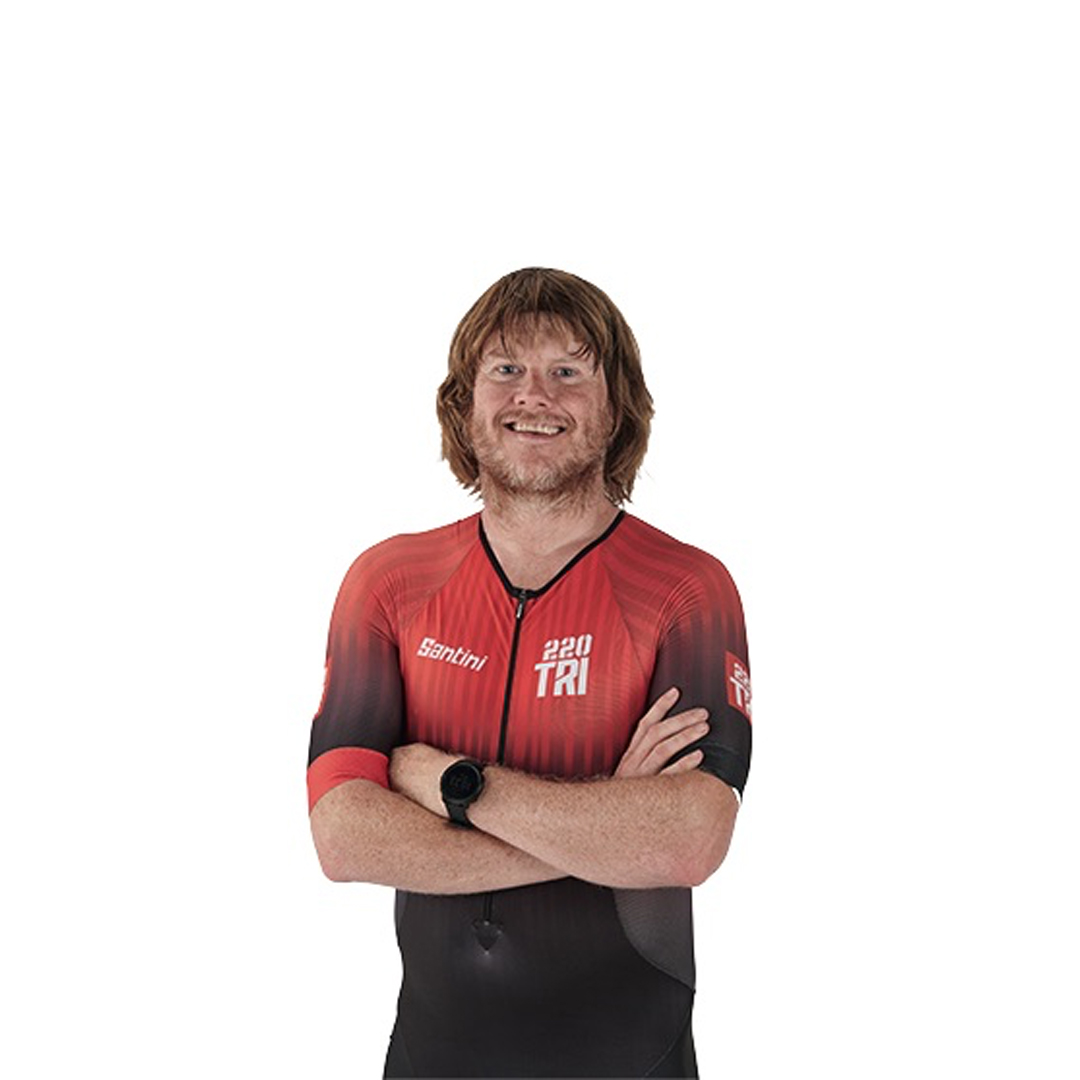Maurice Garin won the first Tour de France in 1903 aboard a steel bike that weighed over 18kg, had one gear and no brakes. If Gaurin needed to stop, he pedalled backwards. His race diet reportedly consisted of hot chocolate and lamb cutlets, while his hydration strategy focused on drinking from fountains along the parcours.
At the 2024 Tour de France, Tadej Pogačar won aboard Colnago’s sub-7kg carbon-fibre V4Rs. The Slovenian utilised 24 gears that shifted electronically and could track a wealth of data via his Wahoo bike computer. He was fuelled by cutting-edge carbohydrate formulations and, apparently, there wasn’t a lamb cutlet in sight.
In short, the Tour has changed immeasurably since Gaurin’s debut victory. But, arguably, the sport hasn’t changed as markedly or as rapidly as in recent times. Here, we reveal the latest technological advancements that are helping riders race faster than ever before.
Artificial intelligence, real speed

Pogačar’s UAE Team Emirates-XRG team isn’t leading the peloton solely on the road – it’s leading it in the world of artificial intelligence, too. Earlier this year, performance co-ordinator Jeroen Swart revealed the team had been working with UAE tech partners for several seasons to create its own artificial intelligence data platform. “It’s now reaching a level that is phenomenal,” Swart said. “The capabilities of AI are crazy.”
The team reportedly named its AI bot ‘Ana’. It can analyse complex data sets and translate them into practical strategies such as recovery protocols, daily training and tyre recommendations that are bespoke to each rider.
Understandably in such a fiercely competitive world, the majority of teams are tight-lipped about their AI development. But Lotto, which has a wildcard for this year’s Tour, told us it had been working with AI company Imec, which has developed a platform called Brailsports.
“Lotto used our AI dashboard at last year’s Tour de France and to great success,” says Steven Latré, head of AI at Imec. “A few days before the [18th] stage, the dashboard flagged up that Victor [Campenaerts] was enduring a high level of fatigue and stress. The team took that on-board and collectively made the decision to instruct Victor to ease off.”
It’s implied that action left the Belgian rider fresher and in form for his tearful victory.

Those of you who use software such as TrainingPeaks might question the transformative nature of this development but, says Latré, it’s down to the specific, personal and wide-ranging advice on offer.
As a snapshot, the Brailsports dashboard assesses lactate-threshold predictions, daily wellness metrics such as heart-rate variability and a fatigue-to-fitness ratio score for an overall summation of that rider’s physical state.
“With these metrics, you receive values of fitness and fatigue that are unique to you,” says Latré. “Our AI model gives you a real insight into the training impulses of the individual, helping to see if you’re edging toward overtraining or on the verge of a performance breakthrough. It’s all about optimising a huge amount of training data of that particular rider.”
Aerodynamic arms race

Suffice to say, when Picnic PostNL’s Casper van Uden won stage four of this year’s Giro d’Italia, reaction was mixed.
The source of the ire revolved around van Uden’s time-trial helmet, which he and his teammates wore on the 189km road stage into Lecce. Where once there were road helmets and time-trial helmets, which evolved to become aero road helmets, now Uden and Lazer’s Volante KinetiCore lid blurred the lines. But why the use of a TT helmet?
“With regards to helmets, I reckon they’re just faster, so when it’s faster, sometimes you just have to do it," said van Uden at his winner’s press conference. “Maybe it doesn’t look the best, but I don’t care about looks. It is fast.”
Of course, the UCI has since had something to say on that matter for 2026.
Also fast are aero bikes that make the most of changes in the UCI regulations. 2025 has seen a number of aero bikes hit the market featuring deeper and more aerodynamic head tubes than before (now up to 160mm), including Tadej Pogačar’s Colnago Y1Rs, and Ridley’s revamped Noah Fast, which will be used by Uno-X Mobility at the Tour.
“The new 2023 rules allow the use of larger compensation triangles around the head tube area, which made the Noah Fast’s design possible,” Ridley’s product manager, Bert Kenens, says.
Despite these developments, and as Uden’s stage win highlighted, aerodynamic advancements in 2025 are arguably more about gear selection than gear creation. It’s a sentiment echoed by founder of Swiss Side, Jean-Paul Ballard.
“We’ve worked with Decathlon and Decathlon AG2R La Mondiale for a few seasons and we’ve helped to develop their frames, helmets and suits, both for time trial and road,” he says. “However, we also provide a lot of performance simulation work where we undertake time simulations of specific races to optimise equipment selection and rider pacing strategies.”
It certainly paid off in 2024, the French team winning 30 times and climbing the rankings to sixth from 18th in 2023. With 12 victories at the time of writing, a strong second half of 2025 could see them match or even eclipse that total. If they do, the simulation would once again be paying off in the real world.
Crank it down, speed it up

If you’re a regular in Calpe, south-east Spain, for a spot of pre-Christmas sun, you might have stumbled across the incongruous sight of professional cyclists descending into the hotel basement to have every length, angle and component measured by a team of PhD-qualified biomechanics.
The highly qualified bike fitters and their array of sensors and video-recording devices analyse said riders in an attempt to improve performance and reduce the chances of injury.
At all levels of road cycling, a biomechanical assessment pays dividends, but arguably even more so when you cover upwards of 30,000km in a year. One of the latest things to play with? Crank length.
Those of you obsessed by componentry micro-detail might have noticed something unerringly petit about Jonas Vingegaard’s bike setup at this year’s Volta ao Algarve.
The Dane rode to GC victory connected to 150mm-long cranks. That’s the shortest we’ve come across in an age where previous wisdom saw most male riders using 170mm to 175mm cranks. His Tour rival Tadej Pogačar switched from 172.5mm to 165mm cranks for the 2024 season, too. It begs the question, why the shrinkage?
“Pogačar would have dropped his crank length for efficiency reasons,” says experienced bike fitter Phil Cavell of CycleFit. “At the top of the pedal stroke, a lower crank length means more space. That’s because when you shorten crank length, broadly you increase saddle height by the same distance.
“So, if like Pogačar you drop by 7.5mm, you raise your saddle height by 7.5mm. That means he has 15mm of extra room at the top of the stroke, meaning he can adopt a deeper drop position for greater aerodynamics.”
There’s also injury-prevention reasoning at play, according to Cavell. “Long cranks result in too much knee and hip flexion at the top of the pedal stroke, meaning you scrunch up, which can cause hip and knee issues,” he says. “Shorter cranks open you up, making things more comfortable, especially if you’re not flexible.”
The one drawback of shorter cranks is a faster cadence is required. That might concern those of you who normally pedal slower at a higher gear. But don’t worry. In practice, the shortening leads to a natural increase in revs per minute that soon becomes second nature.
It also takes pressure off your muscles because a higher cadence diverts stress to the cardiovascular system. That means less pressure on your legs and a boost to your VO2 max.
Core improvements

WorldTour teams are inundated with companies proclaiming that their new tech is a cycling game changer and will guarantee the Parisian podium is within reach. Despite the technological revolution, few are introduced – hardly surprising because teams are understandably sceptical about introducing ‘revolutionary’ ideas to riders who are already near the top of their game.
However, a recent development that has gained a foothold in the professional peloton is the Core body temperature sensor that’s officially used by a number of men’s and women’s WorldTour teams, including Lidl-Trek, Soudal Quick-Step, Canyon-SRAM zondacrypto and Q36.5 Pro Cycling Team.
Core is a non-invasive, wearable device that measures a rider’s core body temperature. It works via a sensor stuck on the chest or clipped to a heart rate monitor strap measuring heat energy entering or exiting the body. An algorithm then converts this information into a rider’s real-time core body temperature.
That data can then be monitored for a number of performance reasons. “Some of our riders live in Northern Europe where they’re used to mild temperatures, but due to the nature of the racing calendar, they might be racing in Australia in the peak of their summer [January]. Or, of course, they’re about to race at the Tour de France and the Vuelta a España, for hours in the saddle at temperatures over 30°C,” says Lidl-Trek’s team support manager Koen de Kort.

“Monitoring heat adaptation via the Core sensor is vital to prepare the body to perform in such conditions," de Kort adds.
The idea is that as a rider’s body becomes used to heat stress, their core body temperature rises less sharply at respective power outputs. With the Core sensor, the rider and team can monitor this adaptation.
Core also says WorldTour teams are using the data to better assist hydration, warm-up, pacing and cooling strategies, and even heat training zones as you might power zones.
It’s certainly more practical than the gold-standard rectal thermometer.
Breathe easy, race fast

Professional cyclists are monitored to within a heartbeat of their sporting lives, but one avenue that has seemingly remained off-limits is measuring the impact of breathing rate on cycling performance. Until now.
“Measuring the contents and volume of inhaled air has always been a laboratory endeavour. But if we could measure ‘breathing’ in the field, adding it alongside established metrics like heart rate, wouldn’t that be a powerful training tool?” says Stephen Seiler, who popularised the notion of polarised training for peak performance.
Seiler’s working with US company Tyme Wear, which has created the VitalPro chest strap, that’s been used by the progressive crew at Team Visma–Lease a Bike.
The sensor measures a multitude of variables seen on other training tools, such as elevation and, for runners, cadence and ground-contact time. But, uniquely, it also measures breathing rate and tidal volume – the amount of air that moves in and out of the lungs with each respiratory cycle – to calculate minute ventilation (the amount of air that enters the lungs each minute).
With this information, you can determine very specific zones to ride at. The result of this specificity should result in greater physiological adaptation and improved performance. Historically, these metrics are measured in the laboratory.
Can we verify the accuracy? Not of the most recent model, but a 2022 study suggested an earlier version of its Smart Shirt was “comparable in reliability when compared to the gold standard” in the lab. At the time of writing, the commercial device is at the pre-order stage.
Fuelling safely and speedily

It’s mooted that riders of times gone by – at least during the doping years – didn’t need to focus too intently on athletic nutrition due to the outsized impact of the needle.
Spin forward to today’s cleaner times and that’s no longer the case, with team chefs and nutritionists omnipresent in every team. This has laid the culinary foundations on which technological advancements can now be built.
“Based on 15 years of scientific research, we’ve built a coding system,” says Dr Sam Impey, co-founder of nutrition app Hexis and former lead nutritionist at British Cycling.
“This personalises and periodises nutritional recommendations based on a rider’s workout and goals. It’s not a food-tracking service, which gives you retrospective information, but delivers a plan to optimise adaptations and performance on that day.”
The system, called Hexis, reveals the macronutrient breakdown of everything a rider eats to guide carbohydrate, protein and fat intake. It also links to TrainingPeaks to integrate kilojoules-burnt information into the daily caloric equation, and is proving popular with pro teams.

“We’re working with EF Education-EasyPost, Ineos Grenadiers, Cofidis and Uno-X Mobility ahead of the Tour,” says Impey.
“The teams are currently planning meals that align with what they think the physical demands of the stage will be for each rider depending on factors like their role on specific days, the terrain and weather conditions. Each team will have three weeks of menus planned before the race, which they can add to the Hexis software.
“I know [team chef] Owen Blandy at EF is a particular fan. The chef is a crucial part of the nutrition process, and Hexis is helping him to be directly connected as part of the performance nutrition team. The teams are seeing benefit from having one system to use for nutrition instead of a mix of spreadsheets and different apps that aren’t connected.”
Impey says it’s particularly useful for teams loaded with up to 30 riders where you might have one rider competing at the Tour while another’s on an altitude camp.
“Historically, those riders training high would enjoy little support from the nutritionist because they’re focusing on the Tour riders. Hexis takes the guesswork out of what they’re doing,” he explains.
Further ideas that are pushing the technological envelope and might be seen at this year’s Tour de France include Soudal-QuickStep and Tudor Pro Cycling riders warming down in Hytro shorts. The British brand was the first to develop wearable blood-flow restriction apparel, which is designed to accelerate recovery.
We’re also aware of Biniam Girmay’s Intermarché - Wanty working with Ultra Cool Tech, which, as the name suggests, creates cooling products including its Glacier Tape, which provides cooling relief after sprinkling it with water.
Team evolution

Professional cycling’s embracing of technology isn’t confined to gear – its support staff is evolving, too. Where once teams mainly comprised directeur sportifs, soigneurs and mechanics, now their numbers have swollen to include performance engineers, heads of innovation and data scientists.
High-profile and in-demand employees include Dan Bigham, who upped sticks from Ineos Grenadiers in the 2024/2025 off-season and reappeared at Red Bull - Bora - hansgrohe as head of engineering. The former hour record holder is all about the data-driven performance modelling and aerodynamic refinement. Here, he explains the engineering setup at the German team.
“Firstly, the role of engineers arguably varies between teams depending on partnerships and what engineering capacity they have. For us, we split it into two halves. We have the ‘application’ side and the ‘knowledge generation’ side.
“Jonny [Wale] works on the application side, so on race performance, aero testing (track testing, tunnel tests, field tests), checking optimisation of helmets, skinsuits, overshoes etc. He’ll work on race comms, pacing strategies, equipment selection, gearing selection, tyre pressures… It’s very much a rider-facing role.
“On the knowledge generation side, which I’m heavily involved with, it’s more around research development, and working with partners on new equipment and application of that knowledge. A lot of that’s about understanding the physics – or trying to understand the physics because they’re bloody complex – of how one component or clothing choice might impact another.

“We build software and do a lot around simulation. We’ll also model many different physical phenomena, so drivetrain efficiency modelling, tyre pressure and tyre rolling resistance…”
You can see Bigham’s input in action at Catesby Tunnel, where Florian Lipowitz recently spent a full day of testing, becoming the first WorldTour rider to do so publicly.
New data scientist recruit Morgan Saussine is also making waves at XDS Astana. Saussine worked on the Kazakh team’s Project 35, which saw Mark Cavendish win a record-breaking 35th stage at last year’s Tour de France. Then, he was freelance; now he’s full-time and has helped the team rise to fourth in the UCI rankings (at the time of writing), which should help them stave off relegation.
Saussine has been credited with analysing the cycling calendar and predicting where Astana has the highest chance of picking up points, taking into account the race and rider characteristics.
All in all, professional cycling has evolved apace in the past five years, let alone since Gaurin single-geared his way to that first Tour de France triumph. With AI becoming ever more present and ever more capable, we suspect the technological revolution has only just begun…
